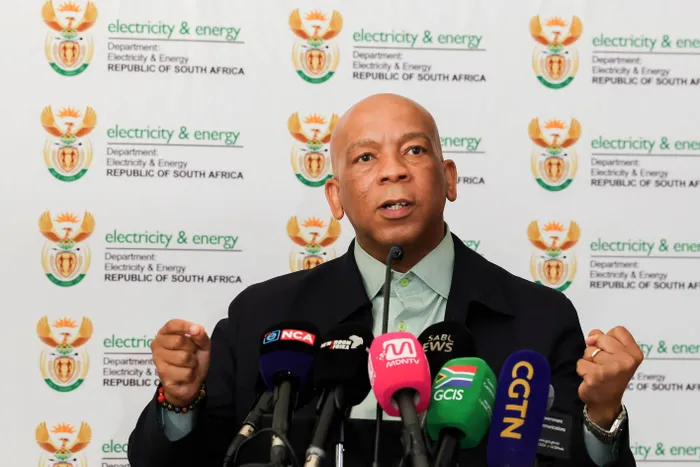Ramokgopa unveils R2.2 trillion off-balance sheet energy investment plan

Dr. Kgosientsho Ramokgopa, the Minister of Electricity and Energy, will brief the media on South Africa’s Integrated Resource Plan (IRP 2025) on Sunday, 19 October 2025, following its approval by Cabinet on 15 October 2025. The IRP is a comprehensive forward-looking strategy that outlines the allocation of South Africa's primary energy resources, ensuring that the country's electricity demand is met both sustainably and cost efficiently.
Image: Supplied/GCIS
Banele Ginindza
Minister of Electricity and Energy, Dr Kgosientsho Ramokgopa, has announced that the newly unveiled Integrated Resource Plan (IRP) will unlock R2.2 trillion in investment over the next 15 years — a programme he described as the largest infrastructure build initiative in South Africa’s democratic history.
Ramokgopa on Sunday said the investment would be an off-balance sheet intervention, largely funded by the private sector through opportunities outlined in the IRP, which seeks to shift the country’s energy mix toward cleaner sources.
The IRP outlines the addition of 11 270 megawatts (MW) of solar photovoltaic (PV) capacity by 2030, 7 340 MW of wind energy, and a 6 000 MW gas-to-power programme. There are currently no immediate plans for green hydrogen projects.
Currently, South Africa’s generation mix comprises 58% coal, 10% rooftop solar PV, another 10% grid-connected solar PV, 8% wind, 4.5% diesel, 4% pumped storage, and 3% nuclear.
"In a nutshell, we are saying the IRP 2025 says between now and 2039, we are going to add 105 gigawatts or 105 000MW of new generation capacity,"Ramokgopa said.
"Let’s put it into context. It means we are going to build Eskom two-and-a-half times between now and 2039. And that’s why we’re making the point that the single biggest investment programme of the post-apartheid era is what we are presenting to the country today."
Ramokgopa said the levels of investment in the South African economy suggest that the National Development Plan (NDP) should be 30% of the Gross Domestic Product (GDP) to achieve the aspirational targets of the NDP and two thirds of that 30% must come from the private sector.
"The R2.2 trillion is an off-balance sheet funding, of course there might be instances where you might burden the balance sheet from the point of view of guarantees, which is a contingent liability," he said.
"But they are very few and far between, of course, depending on how we are going to procure nuclear. That situation might be different. It is not the State that is funding."
He said the intended build programme was expected to shore up the industry, which has collapsed because of lack of demand for build programmes.
Ramokgopa said the Independent Power Producers (IPP) office was conceptualising the mega bid windows programme to create certainty around energy procurement programmes.
"If you were to look at the success rate, we have not achieved what we wanted from IRP 2019 from new generation from private sector. Of course, there are objective constraints there. We have gone to the market to address the issue of the grid. Another risk to the programme is the transmission development plan (TDP)," he said.
"When we do the next round, we will be amongst other things direct people to where there is capacity of course there is a premium you pay. The efficiencies are not as great as you get from the coast, Northern Cape, Eastern Cape. We will account for that and that as we build new corridors. We will let in procurement processes and then be able to match grid capacity and new generation capacity."
Ramokgopa said the TDP could be a stumbling block, hence the decision that in the next round, grid availability will be matched by the new generation. He said a panel had been appointed to focus on the financing of nuclear build.
"We have appointed a panel that will answer questions with regard to financing. We are going that route and that's what is important. We are giving that certainty, when it comes to a procurement process," he said.
BUSINESS REPORT